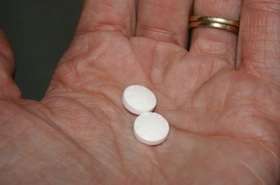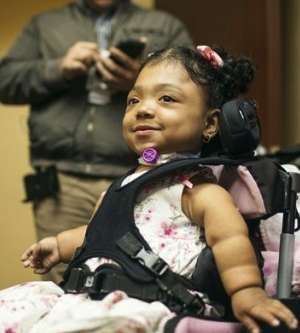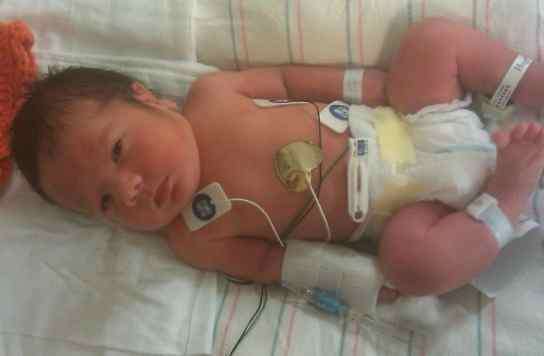Study Finds Beer Ingredient Could Help Brew New Medicine
A recent discovery by scientists at the University of Washington means that a main beer ingredient – hops – could be used to treat a number of health issues.

A recent discovery by scientists at the University of Washington means that a main beer ingredient – hops – could be used to treat a number of health issues.

It is hard to believe, but last spring Emma, then 6, was near death from leukemia. She had relapsed twice after chemotherapy, and doctors had run out of options. Desperate to save her, her parents sought an experimental treatment at the Children's Hospital of Philadelphia, one that had never before been tried in a child, or in anyone with the type of leukemia Emma had.

A new study may have found a specific patient population that may live significantly longer by taking this drug: Colon cancer patients.

Four years ago, Janelly Martinez-Amador was confined to a bed, unable to move even an arm or lift her head. The fragile toddler had a rare disorder that left her without any bones. Now, at age 7, thanks to medical science, she is developing her own bones with the aid of an experimental drug therapy.

An infant who needed CPR every day often stopped breathing. With hopes dimming that the baby would survive, doctors tried an experimental technique never before tried on a human, they created a splint made out of biological material that effectively carved a path through Kaiba's blocked airway.
Global advertising giant JWT paired two of its clients, a Brazilian cancer center with Warner Bros., who enlisted their Justice League comic book illustrators to create superhero stories that transform chemotherapy into a "Superformula." They even made covers for intravenous bags with superhero logos.
Handing down a 5-3 decision today, the U.S. Supreme Court ruled that the Federal Trade Commission can challenge closed-door deals that the big pharmaceutical companies make with smaller generic rivals to keep cheaper products off the market and out of drug stores.
Thronged by news photographers and well-wishers, Kabang the hero dog arrived back home in the Philippines yesterday after 8 months in the U.S. enduring intensive surgeries and treatment for cancer and heartworm. Kabang became a national hero in 2011 after she lost her snout and upper jaw running in front of a motorcycle in what her owner said was a deliberate act to save two girls who were crossing the street.
Scientists have created an intelligent surgical knife that can detect in seconds whether tissue being cut is cancerous, promising more effective and accurate surgery in future.
Ever heard of patients recovering from seemingly "incurable" illness? Oncology researcher Kelly Turner studied 1000 medical reports and found 9 commonalities.
3D printing, in which a three-dimensional object of virtually any shape can be created from computer data, has enormous potential in the field of medicine, as one pioneering British surgeon has shown. Orthopedic surgeon Craig Gerrand used 3D printing to create a pelvis – the first of its kind – for a patient who had lost his to cancer.
For Sharon Hart, the third day after her chemotherapy treatment for her leukemia is always the hardest. But this time, her 14-year-old son told her to look out the window of her Chicago hospital room. His giant message in the newly fallen snow made some of the pain go away.
McMaster University is one of three Ontario sites for Exercise is Medicine on Campus, an initiative aimed at connecting medical and kinesiology students, with researchers and physicians who believes that prescribing exercise to boost health and prevent disease is the way of the future.
A 9-year-old boy whose tiny body was ravaged by swine flu during the 2009 outbreak is recovering from a much-needed but once-impossible kidney transplant.
After an accident, Pierre Paul Thomas, 68, who spent most of his life seeing only vague shadows, was treated at the Montreal General Hospital, where, during a consultation with a reconstructive plastic surgeon, he was given the opportunity of a lifetime.
Exercise can be as good as medication for people with conditions such as heart disease, a study has found. A study in the British Medical Journal looked at hundreds of trials involving nearly 340,000 patients and found moderate physical activity, for example, reducing the risk of stroke by up to 27%.
As she waited with her dad for her bags to arrive on the conveyor belt at Vancouver airport, she hopped up and down in excitement. A year ago, this bubbly little girl couldn't even walk a few steps without becoming exhausted. Now, Muskaan Grewal, 6, is the youngest person in the world to receive a heart pump.
A vaccine developed by scientists at the Public Health Agency of Canada is now available in enough doses to launch the first ever human safety trial of an ebola vaccine.
Ann Romney helped launch a major research center this week aimed at finding cures and treatments for Alzheimer's disease, multiple sclerosis and other devastating neurological diseases.
Scientists around the world are moving swiftly to bring a multitude of promising drugs to human clinical trials. In fact, there are so many drugs in testing right now, it is hard to keep track. Here are some of the progress from Canada, the US and China.
Recent Stories
A Heartfelt Reminder to Appreciate the Ones We Love
Cherish the Woman Who Stands by You
Breaking Generational Cycles of Pain
Living by Your Own Values, Not Others' Approval
When Life Brings Rain, It’s Okay to Rest
Before You Judge Someone's Life, Take a Moment to Walk in Their Shoes.
A Friend Who Spreads Gossip is Not a True Friend at All
The Value of Human Connection Over Digital Convenience
The Quiet Kind of Love
One Day, Your Mom Won’t Call You Anymore
I’ve reached a point in my life...
Happiness is a mindset, a conscious choice we make every day